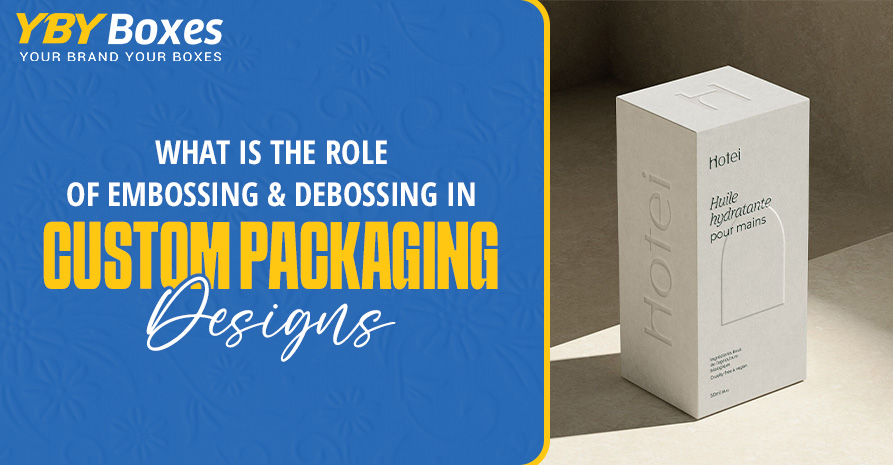
-
Office Timings Mon - Fri 09:00 am 5:00 pm

Custom packaging designs are crucial for making a product market-ready. Treatments like embossing and debossing bring an element of refinement to an otherwise simple packaging. They set such packaging apart by making it feel unlike any other.
This technique enriches the sensory experience of a consumer while giving a great impression to the brand. It further adds texture and depth to create eye-catching packaging on the shelves.
Embossing and debossing are essential for custom packaging. It allows companies to make their custom packaging truly very special. An embossed area appears raised above the surface while a debossed area looks sunk below.
Both of them produce different effects by going from soft textures up to intricate designs. Well suited for many kinds of substrates, these techniques exhibit excellent result on paper, cardboard, and plastic.
Embossing and debossing are important techniques in packaging design. They bring in unique features that accentuate the packaging. The raised designs create an embossing that gives a three-dimensional effect. The recessed designs are created by debossing.
These techniques may increase the appeal of the packaging. For example, Coca-Cola uses embossing for a raised logo, hence increasing its visibility. Debossing offers an aura of finesse while accommodating recessed areas for text mention or slogan.
Embossing lifts the surface of packaging material to achieve a 3-D effect. It is typically achieved using heat, foil stamping, or blind embossing. An ideal technique for creating pop-out effects or impressions for designs, patterns, gargantuan style logos.
Debossing sinks the surface of packaging material to give a recessed effect. It is achieved using die-cutting and laser engraving methods. This technique adds depth and texture by being decoratively subtle.
Embossing raises its designs, while debossing lowers them. This makes all the difference in the world when it comes to packaging design. It allows designers to create outstanding packages that are hard to miss. By integrating them, designers create tools for even higher-level creativity regarding brand identity.
Textured custom printed packaging design started as a field where simple techniques like stamping and printing were applied. Definite improvements in packaging design have followed improvements in technology. Newer materials and methods, embossing and debossing, were introduced. These allowed for even finer designs and more attractive packaging.
The implementation of embossing and debossing in the production of packaging involves a wide range of technical stages. The choice of tools and materials will therefore be directly linked to the result desired regarding the appearance and feel of the product. Materials play a major role in determining the quality of the end product.
Die-cutters and foil stamping machines are integral to making embossed and debossed designs. Their quality directly influences the quality of the packaging itself.
Most of the common materials used in packaging purposes include paper, cardboard, and plastic. These should be considered keenly to withstand the operational parameters of embossing and debossing. Appropriate materials entice customers and, in turn, improve the marketing chances of an item.
Producing involves design, die-cutting, and finishing. Through knowledge of these technical aspects, companies can create top-quality packaging. With the right equipment and materials, they can meet and exceed customer expectations.
Adding texture to packaging through embossing and debossing can become a game changer for any brand. It can enhance the design of the packaging materials to entice all consumers’ eyes. These tactile elements create unforgettable memories for the audience and build a strong emotional tie with it.
The visual and sensory appeal of textured custom packaging designs strengthens brand recognition and market standing in the eye of the consumer, while also keeping product relevance in constant view. It also guarantees continued engagement and loyalty among these consumers.
An embossed pattern in the background or a debossed logo in the foreground shows that textured applications let your brand shine amidst a lot of competition.